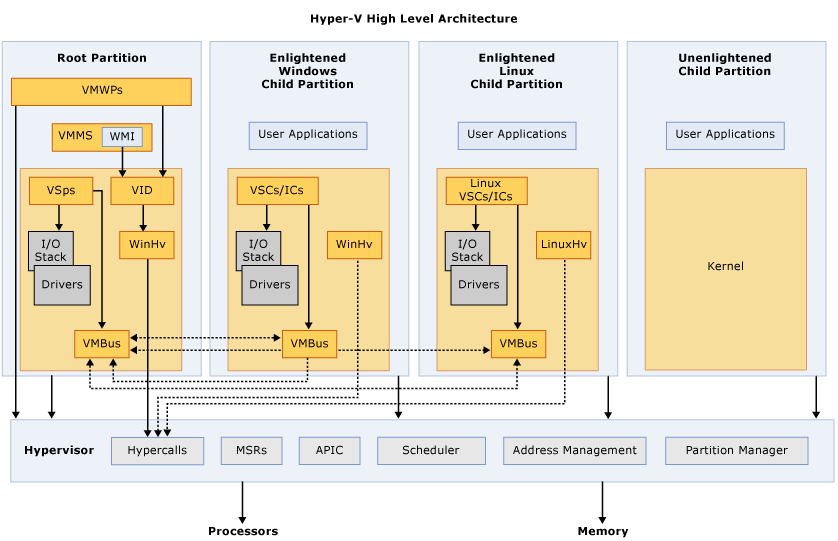

- #Client hyper v vs virtualbox full
- #Client hyper v vs virtualbox for windows 10
- #Client hyper v vs virtualbox windows 10
- #Client hyper v vs virtualbox pro
#Client hyper v vs virtualbox windows 10
It's on by default in VMs you create using the Windows 10 Technical Preview. Make sure this feature is enabled ( Figure D). This feature uses the tried-and-true Volume Shadow Copy service to create a snapshot of your virtual machine whenever you want. You can also adjust memory and add a network adapter to a virtual machine on the fly, although the latter feature works only if you've chosen the Generation 2 format when setting up your VM.īut the killer feature, as far as I'm concerned, is the availability of production checkpoints. There's a new binary configuration file format for virtual machines that replaces the old XML-style text files, making it easier to avoid accidentally corrupting a VM. If you decide to run Hyper-V on a PC running the Windows 10 Technical Preview, you'll get access to some new features. (In either case, save the product keys from the download page, because you might need them to get past activation issues during your testing.) You'll find the Windows 10 Enterprise ISO on a separate page.
#Client hyper v vs virtualbox for windows 10
For Windows 10 Pro, those files are at this Microsoft webpage. You'll need an ISO file containing the installation files for your virtual operating system. Everything you want to accomplish can be done with a simple wizard ( Figure C). Hyper-V experts who are responsible for virtual server farms manage the entire infrastructure using the PowerShell command line, but it's fine to stick with the Hyper-V Manager for desktop duties. Figure BĬlick OK, restart the PC, and you're ready to go. This dialog box is from the latest release of the Windows 10 Technical Preview, but it's essentially unchanged from the Windows 8.1 version. Click to select the Hyper-V option and make sure that the additional items beneath it are selected as well ( Figure B).Select Turn Windows Features On Or Off.In Control Panel, click Programs and select Programs And Features.To enable Client Hyper-V in Windows 8.1 or Windows 10, follow these steps: It's an optional feature and is disabled by default. Most modern PCs built for enterprise use these days are fully capable of running Hyper-V all you have to do is take a quick visit to the BIOS to enable the necessary options: Intel Virtualization Technology (Intel VT) or AMD Virtualization (AMD-V).Īfter that step is out of the way, you'll need to enable Hyper-V in Windows.
#Client hyper v vs virtualbox full
(The full list of hardware requirements is available in this TechNet article.) There are also a few technical hardware requirements that exclude some older (much older, to be honest) PC designs. You'll also need the 64-bit version, although that's hardly a limitation: Running 32-bit Windows limits you to 4 GB or less of RAM, and you'll want to dedicate that much and more to each virtual machine you run.

#Client hyper v vs virtualbox pro
If you want the benefits of Client Hyper-V, you'll need to pay for the Pro or Enterprise versions of Windows. In my experience, it's a robust platform that makes it dead simple (and safe) to test software or services without having to compromise production systems. Oracle has made fans with its free VirtualBox desktop virtualization product, and Parallels has carved out a niche for anyone who wants to run Windows on a Mac.īut Hyper-V has a big edge for IT pros because it's smoothly integrated into recent desktop Windows versions in a hassle-free, it-just-works kind of way. VMware has been building full-strength virtualization solutions that scale from the desktop to the enterprise for year. Virtualization technology isn't new, of course.


 0 kommentar(er)
0 kommentar(er)
